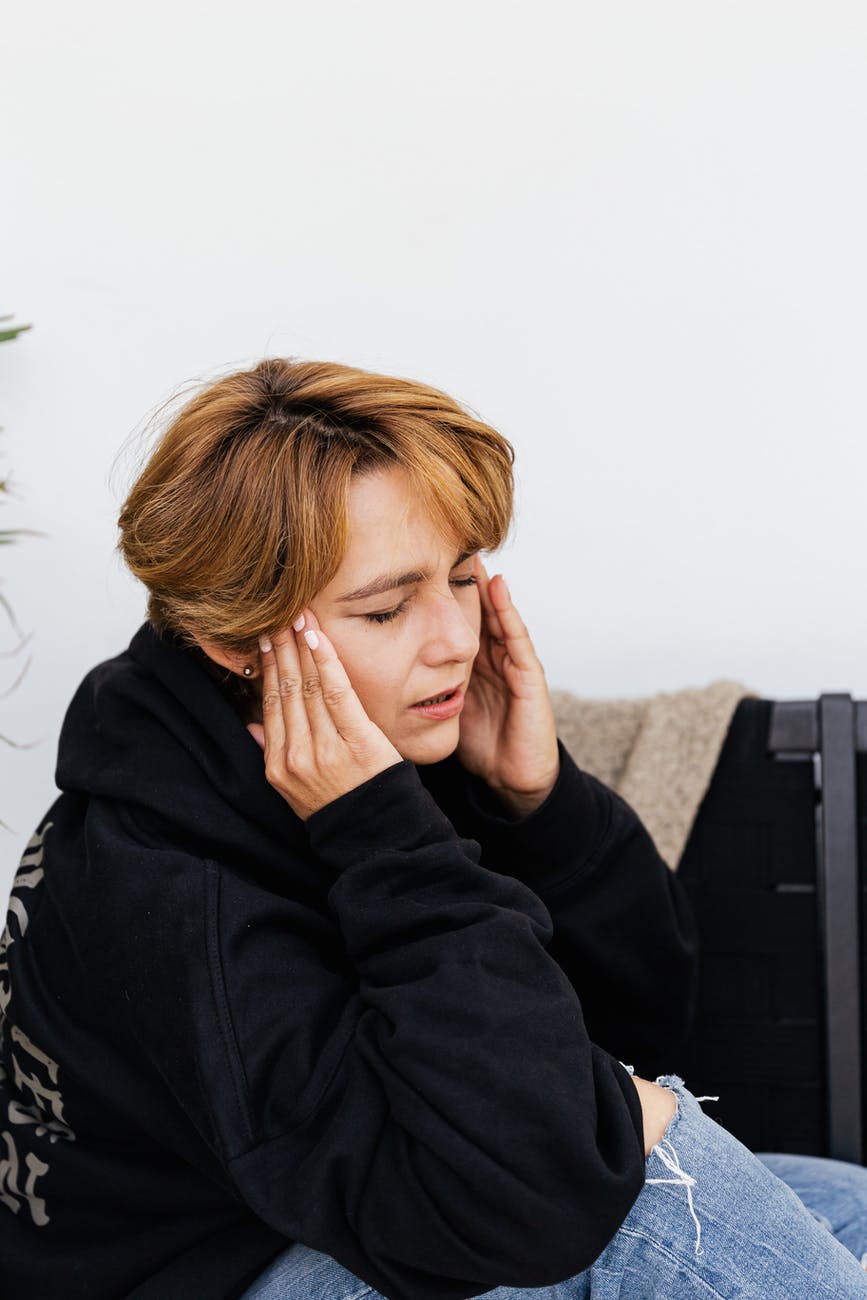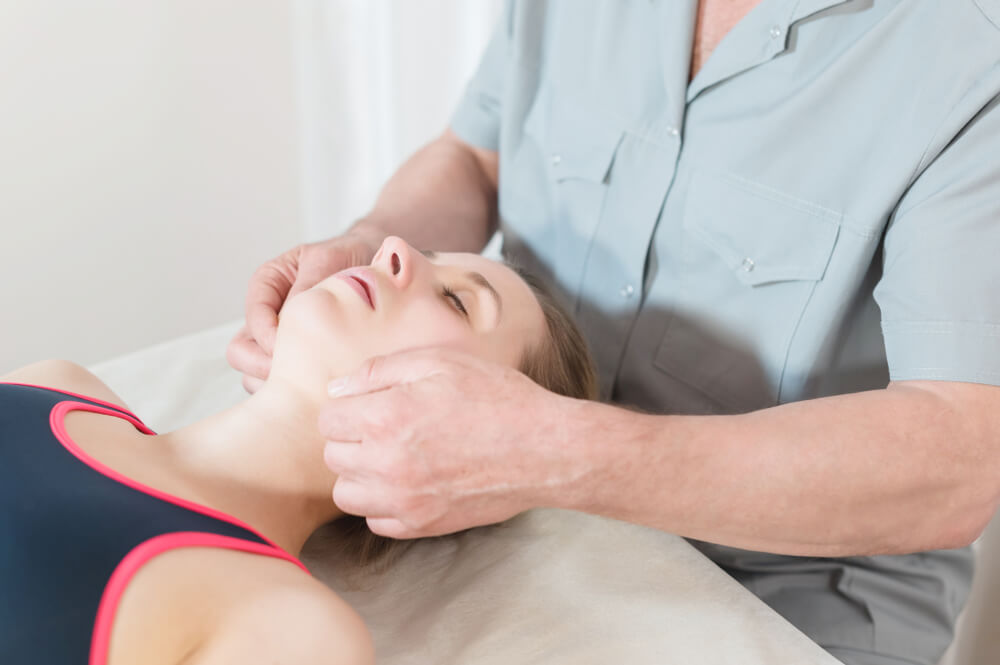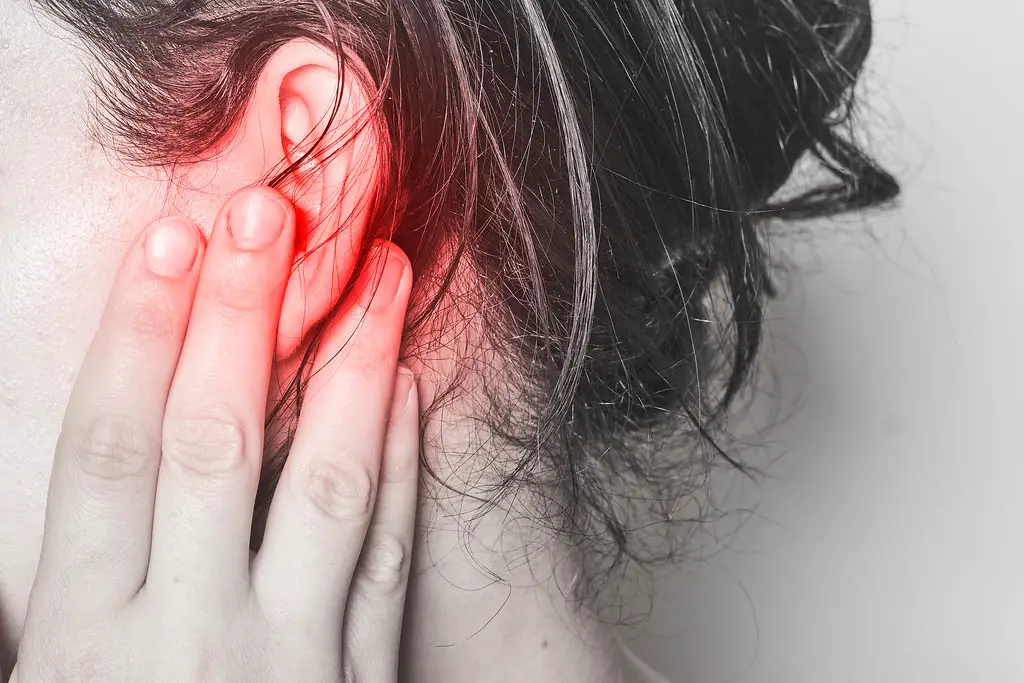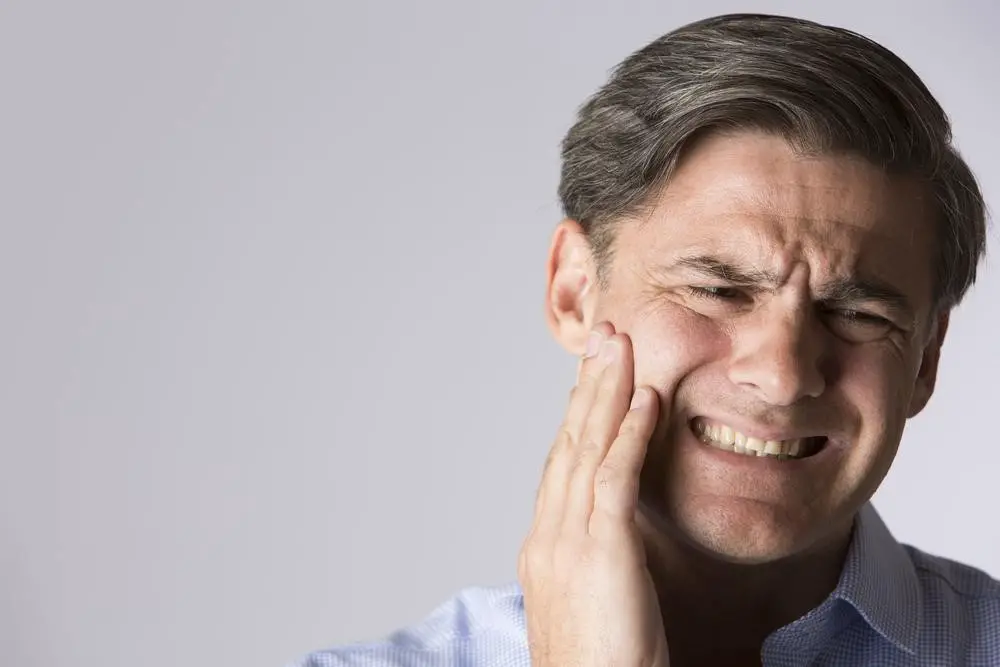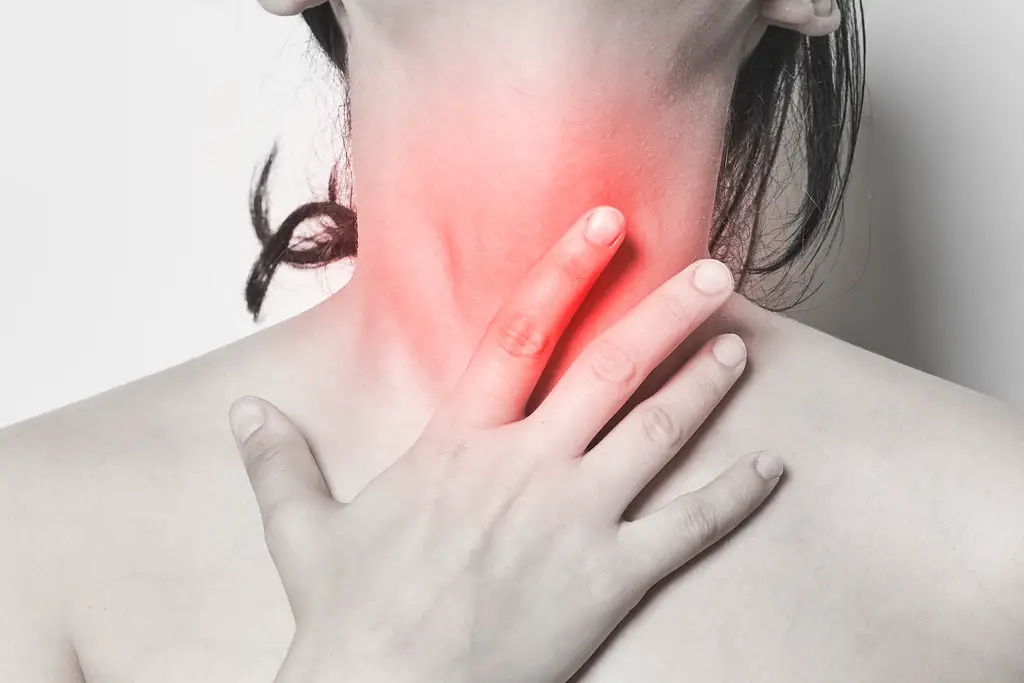Article reviewed and approved by Dr. Ibtissama Boukas, physician specializing in family medicine
The temporomandibular joint (TMJ) refers to the junction between the lower jaw and the temporal cavity located in front of the ear. All joint pathologies, dental occlusion, trauma to the jaw or chewing dysfunction can cause disorders at this level. In the majority of cases, they all result in pain. The ATM disorders affect one in two adults.
In this article, we will detail the painful symptoms and possible causes of temporomandibular joint disorders.
Definition and anatomy
THEtemporomandibular joint (TMJ) is the articulation between themaxillary bone (bones of the skull) and the mandible (lower jaw). It is regularly used for chewing, swallowing, yawning and speaking. There are two of them, one on each side of the face.
It is made up of two articular surfaces:
- le mandibular condyle or "head of the joint" consisting of the lower jaw;
- la temporal fossa or “dwelling” constituted by the skull.
Le zygomatic tubercle lying in front of the temporal fossa provides rotation of the condyle when opening the mouth. Between these bony surfaces is a cartilaginous meniscus also called the articular disc (not to be confused with the intervertebral discs).
During jaw movements, this meniscus protects the joint and prevents friction between the two surfaces. The attachment of this meniscus is ensured by a complex ligament system. It is linked to the masticatory muscles, in particular the pterygoid muscle.
The ATM are among the most complex joints in the human body. Their movements must be synchronized. This allows the jaw to be used appropriately. If there is a lack of coordination, the cartilaginous meniscus can move, damage or prevent the harmonious functioning of the TMJs. In this case, we are talking about ATM dysfunction or disorder.
Causes of temporomandibular joint pain
The causes of TMJ pain are multifactorial. They can be linked to trauma to the jaw or to a particular morphology.
TMJ dislocation
La temporomandibular joint dislocation is a very common trauma.
It usually occurs when the mouth is wide open: during a wide yawn, dental procedure, etc. It can also occur after a fall, a punch or excessive muscle tension.
It can cause an inability to close the mouth and a lateral deviation of the jaw. Pain occurs when the person tries to close the mouth.
To fully understand it, it should be noted that the ATM is constantly subject to pressure (chewing, speech, etc.). Normally, when we open our mouth, the condyle tilts into the glenoid (cavity in which the bones fit together) and slides forward. It then returns to its place when the mouth is closed. This is called a physiological subluxation.
Nevertheless, it happens that the condyle remains blocked forward after having left its housing. In this case, we are talking about temporomandibular dislocation.
Cyst
The jaw cysts are cavitary lesions that develop in the maxilla or mandible. They are one of the most common causes of temporomandibular joint dysfunction. There are different types of cysts.
Infectious cysts
The infectious cysts are the most common. They result from the intraosseous evolution of a dental infection, through the root canal, periodontium or both. They can also be the consequence of:
- an insufficient or poorly made dental filling;
- teeth mortified following a carious lesion.
Follicular cysts
The follicular cysts ou dentigerous cysts result from the proliferation of the envelopes of an impacted tooth. They can cause inflammation or infection.
Other cysts
Other cysts that have nothing to do with the teeth can also generate a disorder in the ATM. The most common is the nasopalatine cyst. It can cause pain in the palatal region, behind the upper incisors.
Other possible causes
The temporomandibular joint disorders can also come from repetitive clenching of muscles or teeth. This causes spasms and pain. It could be a bad habit or bruxism.
Teeth grinding, most often during sleep, is also a source of great pressure. It can cause pain in the temporomandibular joint.
Stress, psychological tensions, congenital anomalies, arthritis problems, degenerative joint diseases, neuromuscular pathologies… are also likely to cause ATM problems or disorders.
Un Algo-dysfunctional syndrome of the masticatory apparatus (SADAM), also called costen's syndrome, is a pathology resulting in various symptoms including jaw pain, and is likely to be very inconvenient.
To learn more about the causes of jaw pain, see the following article.
Symptoms of a Temporomandibular Joint Disorder
The signs characterizing a temporomandibular joint disorder are very varied: mechanical symptoms, painful symptoms and functional symptoms.
The mechanical signs correspond to cracking, crackling or rubbing of the joint when opening the mouth. In addition to these symptoms, there is chewing discomfort, limitation of mouth opening, blockages or recurrent dislocation of the jaw.
A TMJ disorder can also manifest as painful symptoms when the jaw opens or closes. The pain may radiate to other places besides the temples. The subject may feel:
- sinus pain;
- a headache;
- a migraine ;
- a headache ;
- a feeling of pressure or otitis in the front of the ears;
- facial neuralgia ;
- neck or shoulder pain...
Pain can appear and disappear more or less regularly.
As for the functional symptoms, they relate naturally to mastication and hearing. Hearing problems are often manifested by a tinnitus : a feeling of extraneous noise and permanently or temporarily clogged ears. Some patients also experience dizziness and a metallic taste from the mouth.
How to make the diagnosis?
First, clinical examinations are carried out at the start of the diagnosis of an TMJ disorder. These examinations consist of a palpation of the area of the joint concerned. The examiner also asks the patient to open and close their mouth in order to assess abnormal movements, pathological noises, inflammatory or painful reactions, etc. They also make it possible to find any other possible cause of an ENT and dental nature.
Following a clinical examination, the doctor requests additional examinations to confirm the clinical diagnosis.
ATM radiography
A conventional radiography by the 2D dental panoramic makes it possible to observe a joint morphological anomaly. It also makes it possible to know if the disorder is of pure dental origin or if other underlying pathologies (osteoarthritis) are involved. It is often the first additional examination requested by the doctor.
MRI
Only the doctor is able to prescribe a IRM (Magnetic resonance imaging). This examination is indicated for ATM dysfunction assessments. It consists in highlighting the articular disc and the ligament at the level of the jaw joint.
MRI shows clear and precise images that allow the detection of meniscal lesions.
Other exams
Other examinations such as CT scan, muscle testing of the face, masticatory muscles and muscles of the cervical spine can be made to complete the diagnosis of a disorder within the temporomandibular joint.
What are the possible treatments ?
Most TMJ disorders progress favorably over time. In addition, a functional treatment such as symptomatic treatment of pain can relieve you.
Physiotherapy
Within the framework of the ATM rehabilitation, we recommend the maxillofacial physiotherapy.
The objective of this approach is to help you recover mouth opening, reduce pain, contractures and edema, and recover normal muscle strength and coordination.
In this case, the physiotherapist uses various techniques, namely:
- manual therapy to restore normal movement;
- muscle relaxation techniques (temporal, suboccipital, intraoral muscles);
- an exercise program and postural education;
- prevention advice.
Osteopathy
Osteopathy specializes in restoring posture. The osteopath observes, analyzes and treats the possible causes of jaw imbalance.
During the first session, the osteopath conducts an interrogation and a manual examination in order to find out whether or not the pain is linked to a jaw problem. If this is the case, he uses appropriate techniques to release the tensions on the part concerned. It also relieves pain.
Other types of treatments
The symptomatic treatments for an TMJ disorder mainly concern analgesics, anti-inflammatories and muscle relaxants (muscle relaxants).
If these classic treatments are not enough, botulinum toxin can be added as a supplement. It is injected directly into the masticatory muscles to relax and reduce pain in the muscles of the joints.
Surgery is rarely indicated.
Sources
https://www.chirurgien-maxillo-facial.com/articulation-temporo-mandibulaire/
https://www.orthodontisteenligne.com/articulations-temporo-mandibulaires-atm/
https://www.doctissimo.fr/html/sante/encyclopedie/troubles-articulation-temporo-mandibulaire.htm



